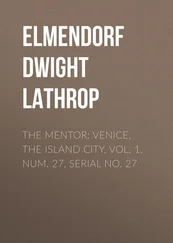The Climate City
Здесь есть возможность читать онлайн «The Climate City» — ознакомительный отрывок электронной книги совершенно бесплатно, а после прочтения отрывка купить полную версию. В некоторых случаях можно слушать аудио, скачать через торрент в формате fb2 и присутствует краткое содержание. Жанр: unrecognised, на английском языке. Описание произведения, (предисловие) а так же отзывы посетителей доступны на портале библиотеки ЛибКат.
- Название:The Climate City
- Автор:
- Жанр:
- Год:неизвестен
- ISBN:нет данных
- Рейтинг книги:4 / 5. Голосов: 1
-
Избранное:Добавить в избранное
- Отзывы:
-
Ваша оценка:
- 80
- 1
- 2
- 3
- 4
- 5
The Climate City: краткое содержание, описание и аннотация
Предлагаем к чтению аннотацию, описание, краткое содержание или предисловие (зависит от того, что написал сам автор книги «The Climate City»). Если вы не нашли необходимую информацию о книге — напишите в комментариях, мы постараемся отыскать её.
Provides professionals in finance, technology, and consulting with solutions for improving the quality of urban life under the changing climate The Climate City
The Climate City:
The Climate City
The Climate City — читать онлайн ознакомительный отрывок
Ниже представлен текст книги, разбитый по страницам. Система сохранения места последней прочитанной страницы, позволяет с удобством читать онлайн бесплатно книгу «The Climate City», без необходимости каждый раз заново искать на чём Вы остановились. Поставьте закладку, и сможете в любой момент перейти на страницу, на которой закончили чтение.
Интервал:
Закладка:
In Chapter 10, The Agile City (Part I) , Julia Thayne writes how the onset of the COVID-19 pandemic in early 2020, and the racial justice protests that followed this, marked a tidal-wave change in how city governments view their roles in managing urban transportation networks. Both events exposed what was already becoming clear through heightened awareness of climate change: cities must leverage agile decision-making to create and operate agile transportation systems that respond to what people need when they need it. The “Agile City” is about how to build those new systems. It starts by exploring the impacts of how the design of cities’ transportation networks – looking at how not only people but also things move across cities – has affected urban economies, environmental footprint, social inclusion, and even their physical shape. It then looks at new transport modes and technologies and how they might be used to supplement or supplant existing urban transportation networks. It acknowledges the current disconnect between the vision and the reality of urban transportation and discusses the multiple reasons why this might be the case. It ends with a note of pragmatic optimism on a way forward, a path based on one fundamental assertion: How people move, and how easily people move, in cities is directly linked to cities’ wellbeing.
In Chapter 11, The Agile City (Part II) , Jonathan Laski asks the reader to contemplate if a city can truly be sustainable without allowing its citizens and visitors alike to move around safely, inexpensively, accessibly, and without fear of sickness from air pollution. Prioritizing walking, cycling, and mass transit offers governments a cumulative saving opportunity of almost 10% of global GDP. The chapter summarizes the environmental, social, and economic co-benefits of designing cities to prioritize active mobility, covering everything from reduced healthcare costs to increased support for local businesses. The chapter concludes by referencing two current events – the COVID-19 global pandemic and mass protests for racial equality – both of which have nudged cities further towards recentring people and their free movement at the heart of cities.
In Chapter 12, The Habitable City (Part I) , Olivia Nielsen walks us through some of the challenges of housing the world’s population when financial and environmental resources are scarce. The world’s current housing deficit is estimated at 1 billion units, and the UN predicts that by 2030 this deficit will affect close to 40% of the global population. By then, 60% of the world will live in urban areas, and the burden of housing these growing populations will fall primarily on cities. Cities must find ways to house 200,000 newcomers pouring in from the countryside every day. Addressing the global housing deficit will require us to build millions of new units while continuously upgrading and investing in our current housing stock. The Habitable City explores how cash-strapped cities can utilize new ideas and solutions to address this challenge, while minimizing our impact on the environment and integrating disaster and climate resilience as critical components of housing policies.
In Chapter 13, The Habitable City (Part II) , Nicky Gavron and Alex Denvir move the housing discussion to a new level. The construction sector is responsible for more than 23% of global greenhouse gas emissions, but cities will, and must, continue to grow. To do so while meeting global climate change targets and providing affordable higher quality homes, there needs to be a technological revolution in the way cities are built and designed. Leaders need to be bold and ambitious in the way they use that most precious resource: land. Density must be preferred to sprawl, to build faster and smarter, optimizing land. Cities must spearhead a new industrial sector in precision manufactured housing (PMH). PMH offers new jobs; reduced build times and costs; greater quality control; cleaner and safer construction processes; better air quality; and low construction waste and energy use.
Leaders must be bolder still. Rather than building homes with steel and concrete, by combining PMH with low- or zero-carbon materials such as engineered timber, we can dramatically reduce the carbon footprint of new buildings. Green belts can contribute to growing these homes of the future with trees and forests, while protecting and enhancing the crucial interrelationship between urban areas and their rural hinterland. These are homes that will lock away carbon, in greener, denser cities and be part of a circular, sustainable, and environmental economy.
In Chapter 14, The Resourceful City , Conor Riffle takes on one of the oldest challenges facing cities: how urban areas manage and dispose of their resources. Since the earliest Roman civilizations, cities have disposed of waste in landfills. As the world hurtles to 9 billion people and beyond, as our cities absorb more than half of the Earth’s residents, and as climate change threatens our species’ survival, the landfill model is unsustainable. Instead, leading cities are moving towards solutions that keep resources circulating for as long as possible – replacing the old, one-way paths to landfill with circular economies. This chapter highlights urban policies and technologies that are helping cities finally kick their landfill habits – and creating healthier, wealthier cities in the process.
In Chapter 15, The Zero Waste City , Terry Tamminen and Peter Lobin ask us to imagine a city without waste. “Trash” bins become sources of energy, fuels, and raw materials for products and buildings. Forests remain standing, because we no longer cut them down, only to throw away the resulting paper, cardboard, and wood in landfills or incinerators, nor do we discard half of the food grown on cleared land, necessitating the clearing of even more land to grow more crops. We no longer send armies around the globe to secure barrels of oil, only to throw away that valuable resource in the form of plastic, much of which we used only for a few minutes. We cut our energy usage and bills in half, making the switch to renewables easier and faster. The Zero Waste City shows how ending the concept of waste saves money, protects ecosystems, and creates new jobs using resources that are literally under our feet, with examples that can be rapidly scaled up to address climate change and ecosystem destruction. The chapter highlights the exciting new policies, technologies, and finance that now allow us to convert up to 95% of today’s “waste” into tomorrow’s valuable resources.
In Chapter 16, The Resilient City , Sarah Wray and Richard Forster show us that while COVID-19 has knocked the world sideways, the past year has also witnessed a series of parallel and compounding crises, including social unrest, intense weather events, and the economic fallout from the pandemic. This perfect storm looks set to be a pivotal moment in changing attitudes to resilience, with a clear focus on learning lessons to strengthen communities against future shocks and stresses – whether economic, social, or environmental.
The Chief Resilience Officer (CRO) role in cities is a relatively new one, but the advent of COVID-19 has seen CROs receive greater support in terms of funding, staff resources, and proximity to the mayor due to a recognition of the urgent need for a holistic strategy which can help cities face up to the various threats they face. Smart city initiatives are playing a key role, too, with cities using digital tools and data innovation to support resilience efforts.
While COVID has shown that cities must adopt a holistic approach to digitalization and resilience, it is equally important that they have the means to implement this. Resilience is becoming a growing consideration for investors, and cities are also increasingly incorporating resilience considerations into their own spending decisions. This chapter highlights examples from the cities of Rotterdam, New Orleans, Edinburgh, and more.
Читать дальшеИнтервал:
Закладка:
Похожие книги на «The Climate City»
Представляем Вашему вниманию похожие книги на «The Climate City» списком для выбора. Мы отобрали схожую по названию и смыслу литературу в надежде предоставить читателям больше вариантов отыскать новые, интересные, ещё непрочитанные произведения.
Обсуждение, отзывы о книге «The Climate City» и просто собственные мнения читателей. Оставьте ваши комментарии, напишите, что Вы думаете о произведении, его смысле или главных героях. Укажите что конкретно понравилось, а что нет, и почему Вы так считаете.











